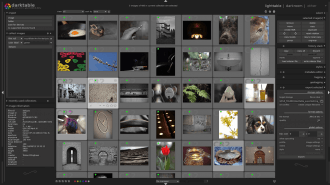
Focus Differential - 3 This seems to be the sweet spot so I never change it.Number of bracketed shots - 8 This is usually ample and you could get away with fewer.Focus Point - single point, positioned over your closest foreground object.

Aperture - usually between f/5.6 and f/7.1.
#Helicon focus pro packages iso#
ISO - 200 Depending on lighting conditions I may increase the ISO, but I never use AutoISO.Mode - Aperture Priority (almost all of my landscape images are shot in A).It has a minimum focusing distance of 20cm and a field of view of up to 115°. Regardless of which OMD camera body I happen to be using, my goto lens for this type of photography is the 7-14mm f/2.8 PRO. As mentioned earlier a tripod can be useful, but to be honest, the image stabilization of the OMD line-up is so good that I often forego the tripod. This will give me the field of view needed to capture the foreground, horizon and sky. Many of these images were also shot in vertical orientation and with the camera tilted down at about a 45-degree angle. For many of the images in this article the front lens element was about 6 inches away from the foreground subject.

I opt to use focus bracketing/stacking when the foreground lacks larger points of interest and I want to accentuate the details of smaller foreground subjects like ice crystals, sea shells, small rocks, leaves, flowers, etc. Here is a breakdown of how I go about using this feature.

Although the scene may be substantially different from one location to another, the method by which I use focus bracketing/stacking remains fairly consistent.


 0 kommentar(er)
0 kommentar(er)
